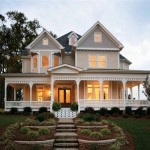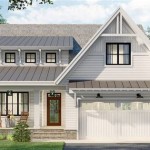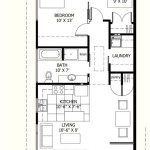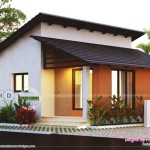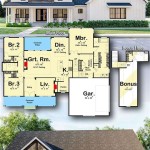Stone and Timber Home Plans: Blending Rustic Charm with Modern Living
Stone and timber home plans represent a timeless architectural style that seamlessly integrates natural materials to create dwellings that are both aesthetically pleasing and deeply connected to their surroundings. This building approach, often associated with rustic elegance and enduring strength, has gained significant popularity due to its inherent beauty, durability, and potential for energy efficiency. Understanding the nuances of stone and timber home plans is essential for individuals considering this distinct building style.
The allure of stone and timber homes lies in their inherent connection to nature. The use of locally sourced materials, such as quarried stone and sustainably harvested timber, integrates the home into the landscape. This creates a visual harmony that is often difficult to achieve with more conventional building materials. Moreover, the textures and tones of stone and timber offer a warmth and character that can transform a house into a home. The inherent strength of these materials also provides a sense of security and permanence, further enhancing the appeal of this architectural style.
Planning a stone and timber home necessitates careful consideration of various factors, including site selection, design principles, and material choices. The integration of these elements is crucial to creating a home that is not only visually appealing but also functional, energy-efficient, and tailored to the specific needs of the occupants.
Key Point 1: Design Considerations for Stone and Timber Homes
Designing a stone and timber home requires a holistic approach that balances aesthetic appeal with practical considerations. The design process should begin with a thorough assessment of the building site, taking into account factors such as topography, climate, and prevailing winds. This assessment informs the overall layout of the home and its orientation on the site, maximizing natural light and ventilation while minimizing exposure to harsh weather conditions.
One of the defining characteristics of stone and timber homes is their open and spacious floor plans. This design approach allows for greater flexibility in interior design and facilitates natural light penetration throughout the home. High ceilings, exposed timber beams, and strategically placed windows contribute to a sense of grandeur and connection to the outdoors. However, careful consideration must be given to insulation and energy efficiency to prevent heat loss during colder months and maintain a comfortable indoor temperature year-round.
The architectural style of a stone and timber home can vary widely, ranging from traditional rustic designs to more contemporary interpretations. Traditional designs often incorporate elements such as gabled roofs, exposed rafters, and large stone fireplaces. Contemporary designs, on the other hand, may feature clean lines, minimalist detailing, and the integration of modern amenities. Regardless of the chosen style, the design should be sympathetic to the surrounding environment and reflect the unique character of the site.
Proper planning also involves careful consideration of the structural integrity of the home. Stone and timber, while inherently strong, require specialized construction techniques to ensure stability and longevity. The expertise of experienced architects and builders is crucial to ensure that the home is structurally sound and complies with all relevant building codes and regulations.
Furthermore, the design should incorporate sustainable building practices to minimize the environmental impact of the home. This can include the use of recycled materials, energy-efficient appliances, and renewable energy sources. A well-designed stone and timber home can be both beautiful and environmentally responsible, contributing to a healthier and more sustainable future.
Key Point 2: Material Selection and Sourcing
The selection of appropriate materials is paramount to the success of a stone and timber home project. The choice of stone and timber will significantly impact the aesthetic appeal, durability, and energy efficiency of the home. Therefore, careful consideration should be given to the types of stone and timber used, as well as their sourcing and sustainability.
Stone can be sourced from local quarries or suppliers, depending on the desired aesthetic and availability. Common types of stone used in home construction include granite, limestone, sandstone, and fieldstone. Each type of stone has its unique characteristics in terms of color, texture, and durability. The choice of stone should be guided by the overall design aesthetic and the climate of the region.
Timber selection is equally important. Options range from traditional hardwoods like oak and maple to more sustainable softwoods like pine and cedar. The choice of timber will depend on the structural requirements of the home, as well as aesthetic preferences. It is crucial to ensure that the timber is sustainably harvested and treated to prevent decay and insect infestation.
The sourcing of materials should prioritize local suppliers whenever possible. This reduces transportation costs and minimizes the environmental impact of the project. Moreover, using locally sourced materials supports local economies and contributes to a sense of place. When sourcing materials from further afield, it is important to verify the sustainability of the sourcing practices and ensure that the materials are ethically produced.
In addition to stone and timber, other materials used in the construction of a stone and timber home should also be carefully considered. These materials may include roofing materials, windows, doors, and insulation. The choice of these materials should be guided by their durability, energy efficiency, and compatibility with the overall design aesthetic of the home.
Utilizing reclaimed materials is another effective way to enhance the sustainability of a stone and timber home. Reclaimed timber, stone, and other building materials can add character and charm to the home while reducing waste. Repurposing materials not only reduces the demand for new resources but also adds a unique story and history to the building.
Key Point 3: Construction Techniques and Considerations
Constructing a stone and timber home requires specialized knowledge and experience. The techniques used in the construction process will significantly impact the structural integrity, energy efficiency, and longevity of the home. Therefore, it is crucial to engage experienced architects and builders who are familiar with the intricacies of stone and timber construction.
The foundation of a stone and timber home is critical to its stability. The foundation must be properly designed and constructed to support the weight of the stone walls and timber frame. Common foundation types include poured concrete foundations, concrete block foundations, and stone foundations. The choice of foundation type will depend on the soil conditions and the overall design of the home.
The construction of the stone walls requires meticulous attention to detail. Stone walls can be constructed using a variety of techniques, including dry-stack construction, mortared construction, and veneer construction. Dry-stack construction involves assembling the stones without mortar, relying on interlocking patterns and gravity to maintain stability. Mortared construction involves using mortar to bind the stones together, creating a more solid and durable wall. Veneer construction involves applying a thin layer of stone to a structural wall made of concrete or wood.
The timber frame is another essential element of a stone and timber home. The timber frame provides structural support for the roof and walls, and it also adds to the aesthetic appeal of the home. Timber frames can be constructed using a variety of techniques, including traditional mortise and tenon joinery, and modern metal connector systems. The choice of timber frame technique will depend on the design of the home and the preferences of the homeowner.
Effective insulation is paramount to maintaining a comfortable indoor temperature and reducing energy consumption. Insulation can be installed in the walls, roof, and floor of the home. Common types of insulation include fiberglass batts, cellulose insulation, spray foam insulation, and rigid foam insulation. The choice of insulation type will depend on the climate of the region and the desired level of energy efficiency.
Proper sealing and weatherization are also essential to prevent air leaks and moisture intrusion. This includes sealing gaps around windows and doors, and applying a weather-resistant barrier to the exterior of the home. Effective sealing and weatherization can significantly reduce energy consumption and prevent moisture-related problems such as mold and rot.
Finally, ongoing maintenance is crucial to ensure the longevity of a stone and timber home. Regular inspections should be conducted to identify and address any potential problems, such as cracks in the stone walls or decay in the timber frame. Proper maintenance will help to preserve the beauty and structural integrity of the home for generations to come.

Luxury Timber Frame Home Plans Customizable Golden Eagle

Timber Frame House Plan Max Fulbright Designs

Timber Frame House Plan Max Fulbright Designs

Timber Frame House Plan Max Fulbright Designs

Floor Plans Stonemill Log Timber Homes

Design Your Escape Timber Frame Home Plans For Modern Living

Timber Frame House Plan Max Fulbright Designs

Design Concepts Colorado Timberframe

Rustic Timber Frame House Plans Customizable Golden Eagle

Tour This Captivating 2 Bedroom Rustic Retreat With Timber Accents And Stone Detailing 1 362 Sq Ft Floor Plan Included

